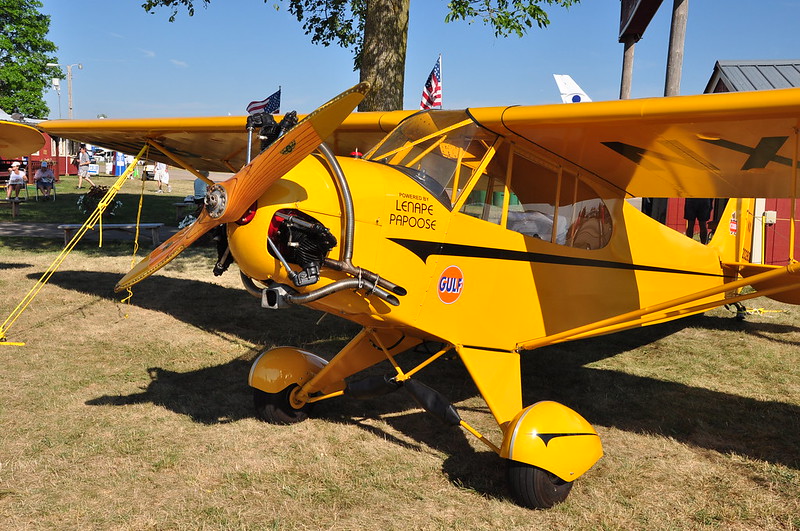Well, I was first introduced to the Papoose in pieces, as the engine was a basket full of parts(a big basket, as it also held all three cylinders), and later in an article on the Cub in a July, 1986 issue of AOPA, which also featured the J3P, which also included a reproduction of the original blue prints of the engine itself, which also included dimension measurements. I have since lost that issue, but, interestingly, acquired another copy in a box of old aircraft megazines, and this one I'm keeping mostly safe.
I had also worked on a Shaky Jake, and, coincidentally(or not, perhaps), the Shaky Jake and the Papoose have the same diameter, and the jugs look very much alike, same dimensions.
So, this is whyb I'm thinking that I could use the jugs off a 1/48 scale Shaky Jake for this, which I just ordered from Engines and Things. And if I'm satisfied with what results, I'll try to find another Cub and repeat the whole process.
On the J3P, there is a cowl, of sorts, more a bolw which coveres the case and extends to the back of the engine in the nose. My plan is to take a page from the full-size aircraft restoration manual(commonly called the AC 43.13 1A and 1B, which is an advisory circular the FAA publishes for any woark needed on a full-size aircraft that is not covered by the manufacturer), and basically form a cowl out of ten thousandths brass shim stock and a piece of maple. I'll be doing it like on the "big toys" by making a form out of maple and beating it into shape with a soft faced mallet.
This is how it is done in any competent repair station on anything up to and including heavy jets, such as the Boeing 727.
A bit of a story on that. I was working in the airframe shop at TRAMCo, when one of the junior mechanics(one of the kids fresh out of A&P school) was told to fashion a tip rib on one of the UPS 727's that was in for a "D" checks, which wasan inspection in which the bird is nearly torn apart, which is common on older aircraft, especially heavy jets(what airliners are commonly referred to as). He was handed and appropriately sized piece os .0625 soft aliminum, and told to make it. He asked where the hydraulic press was, as that was what he was told that pieces are made on. The shop foreman yelled at him to get a block of maple and get busy with a rasp and rotary file. The kid complained(and nearly got fired for his trouble), and I was ordered to walk him through the process, which didn't please me very much. But I did, and he made his rib, which was sent out to be heat treated to the proper hardness(T6) and temper.
Had a lot of fun at TRAMCo that year.



















